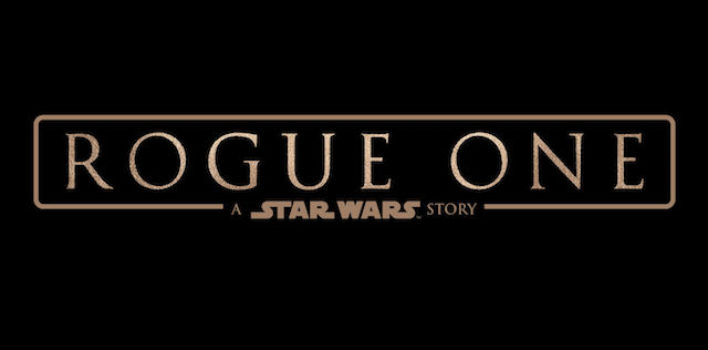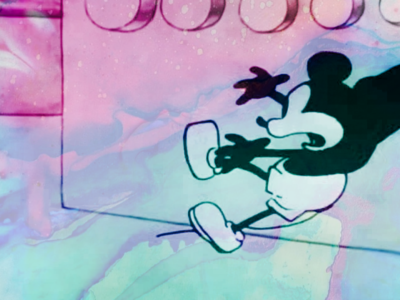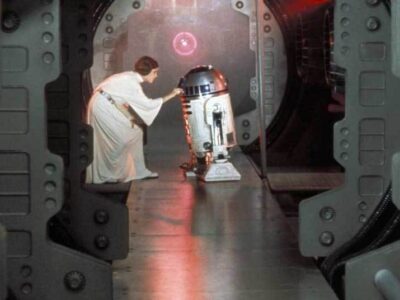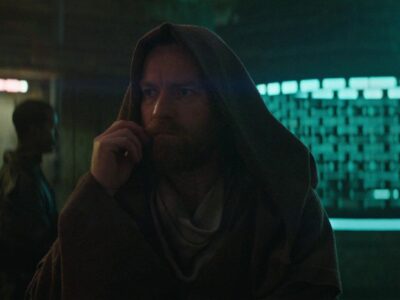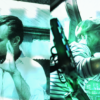Review| Rogue One: A Star Wars Story
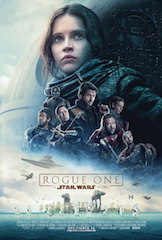 From the moment Star Wars: The Force Awakens ended, I knew and was predicting the return of Star Wars to the big screen was not the true test of the new era of the franchise under Disney ownership. From the moment it was announced as the first non-Skywalker saga film, Rogue One: A Star Wars Story was the true proving ground for Star Wars movies to adapt to different aesthetics, stories, genres, and a variety of directorial visions. With familiar places, familiar vehicles, and even familiar characters, Rogue One adeptly tests its mettle and delivers a solid, thrilling first step into a larger Star Wars cinematic world.
From the moment Star Wars: The Force Awakens ended, I knew and was predicting the return of Star Wars to the big screen was not the true test of the new era of the franchise under Disney ownership. From the moment it was announced as the first non-Skywalker saga film, Rogue One: A Star Wars Story was the true proving ground for Star Wars movies to adapt to different aesthetics, stories, genres, and a variety of directorial visions. With familiar places, familiar vehicles, and even familiar characters, Rogue One adeptly tests its mettle and delivers a solid, thrilling first step into a larger Star Wars cinematic world.
What I have told everyone who wanted to know more about this movie is that when we see the opening crawl of A New Hope and it says, “Rebel spaceships, striking from a hidden base, have won their first victory against the evil Galactic Empire,” that is the movie we are seeing. Centering around the story of Jyn Erso (Felicity Jones), Jyn is a rebellious, hardened young woman with past tied up around her father, Galen Erso (Mads Mikkelsen) and his work with Director Orson Krennic (Ben Mendelsohn) on the development of an Imperial Superweapon we all know as the Death Star. Her father doesn’t tie her with only Imperials, but her past connects her to the Rebel extremist Saw Gerrera (Forest Whitaker), who is the first animated character in Star Wars to make the jump to live-action, and eventually embroils her with Rebel Intelligence officer Cassian Andor (Diego Luna) and Imperial defector Bodhi Rook (Riz Ahmed). The final rebels we meet, Baze Malbus (Wen Jiang) and Chirrut Îmwe (Donnie Yen), are two residents of a world once sacred to the Jedi, Jedha, and the central location of the first third of the film.
From the very first frame of the movie, director Gareth Edwards kept his promise to offer something completely different than any Star Wars movie we have ever seen. If any doubt remained in Edwards’ vision to create a more modern, realistic and gritty Star Wars, one of the main character’s introductions is punctuated by a shrewd, cold-blooded killing of a potential ally more in the spirit of HBO than Disney. Of all the surprises this movie has in store–of which there are many for current fans of Star Wars new and old–the most surprising was the consistent commitment to a gray moral compass and a “boots on the ground” war movie aesthetic.
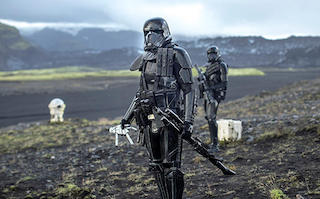 Gone is the adventurous, “space opera” feel of George Lucas’ six films. Rogue One uses handheld cameras and documentarian-style shooting to imagine war set in a galaxy far, far, away. An early scene featuring an Imperial cargo tank illustrates this aesthetic perfectly. One of my favorite scenes of the entire movie, the setpiece and action feel pulled straight out of Saving Private Ryan or Blackhawk Down, except replace Nazis with stormtroopers–not a hard sell–and replace soldiers with a platoon of ragtag aliens, humans, and near-humans. The sheer intensity and visceral nature of the attack on the Imperial tank are something we have never seen in live-action Star Wars. This and other scenes, especially in the final third, pulsate with action but are also incredibly violent. Along with the more moral gray compass in this Star WARs movie, there is a lot of violence. There might not be any blood, but tons of people, aliens, and an endless amount of stormtroopers meet fiery and ferocious ends. What parents might find the most off-putting about Rogue One is how casually yet how up-close the violence is. Some might even consider this movie brutal.
Gone is the adventurous, “space opera” feel of George Lucas’ six films. Rogue One uses handheld cameras and documentarian-style shooting to imagine war set in a galaxy far, far, away. An early scene featuring an Imperial cargo tank illustrates this aesthetic perfectly. One of my favorite scenes of the entire movie, the setpiece and action feel pulled straight out of Saving Private Ryan or Blackhawk Down, except replace Nazis with stormtroopers–not a hard sell–and replace soldiers with a platoon of ragtag aliens, humans, and near-humans. The sheer intensity and visceral nature of the attack on the Imperial tank are something we have never seen in live-action Star Wars. This and other scenes, especially in the final third, pulsate with action but are also incredibly violent. Along with the more moral gray compass in this Star WARs movie, there is a lot of violence. There might not be any blood, but tons of people, aliens, and an endless amount of stormtroopers meet fiery and ferocious ends. What parents might find the most off-putting about Rogue One is how casually yet how up-close the violence is. Some might even consider this movie brutal.
Edwards naturalistic vision grounds the movie in brutal warfare, but also in organic, vivid beauty. While Lucas was known to shoot in many different exotic locales for the original trilogy of movies, Rogue One is adorned in new worlds of beauty. Locations like the verdant, volcanic plateaus of Iceland, the lush, pristine paradise of Maldives, and the claustrophobic, sandstone boroughs of Jordan. Many times we get to linger in these environments as events unfold and the result is breathtaking. The worlds of Star Wars movies have always had a character-like quality to them, and Edwards fully embraced the beauty of our natural world to enhance the film’s lived-in quality.
Yet at the center of every Star Wars narrative, this is a Star Wars STORY after all, is a commitment to characters. Rogue One struggles with its characters in the first third due to the sheer number of characters we have to introduce. There is a breakneck speed to their introduction Lucas never struggled with; he always knew exactly how to get his characters they time they needed to develop, even Jar-Jar. Once we settle in, however, the cast of Rebels and even the cynical, posturing Krennic become relatable, likable characters, especially the Alan Tudyk voiced K2-SO, who will surely be another great addition to the group of Star Wars droids.
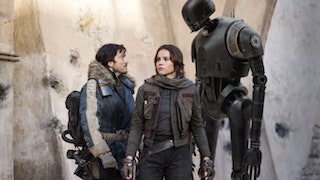 Speaking of Jar Jar, Rogue One takes a huge risk with another all-CGI character, as well as taking a bold approach to the use of CGI. The fingerprints of John Knoll, the VFX expert at the Lucas-founded special effects workshop Industrial Light and Magic who came up with the idea for Rogue One, are all over this movie with its intricately detailed spaceships and life-like aliens. Yes, the all-CGI character(s) being brought up in early conversation is not that great. I am not completely comfortable with the morality of using the character(s). The moral permissibility of such a choice will certainly see it’s back and forth over the coming years as the technology improves, but suffice it to say the risk was taken and it is uniformly not great. Despite all of it, Rogue One continues Lucas’ legacy of making bold creative choices and living with the fallout or praise that follows.
Speaking of Jar Jar, Rogue One takes a huge risk with another all-CGI character, as well as taking a bold approach to the use of CGI. The fingerprints of John Knoll, the VFX expert at the Lucas-founded special effects workshop Industrial Light and Magic who came up with the idea for Rogue One, are all over this movie with its intricately detailed spaceships and life-like aliens. Yes, the all-CGI character(s) being brought up in early conversation is not that great. I am not completely comfortable with the morality of using the character(s). The moral permissibility of such a choice will certainly see it’s back and forth over the coming years as the technology improves, but suffice it to say the risk was taken and it is uniformly not great. Despite all of it, Rogue One continues Lucas’ legacy of making bold creative choices and living with the fallout or praise that follows.
Be the end of the second viewing, I really liked this movie. I didn’t love it as much as The Force Awakens. It did not emotionally grab me with the same power as Abrams’ homage to the original trilogy, but the stakes were greater and much more intense. Is it better than the prequels? Probably, but it also strongly relied on the prequel trilogy’s legacy of serving the greater narrative of Star Wars and taking innovative risks in moving Star Wars forward. I can safely say I am looking forward to the next standalone film with a little less apprehension. For this fan that is saying a lot.


